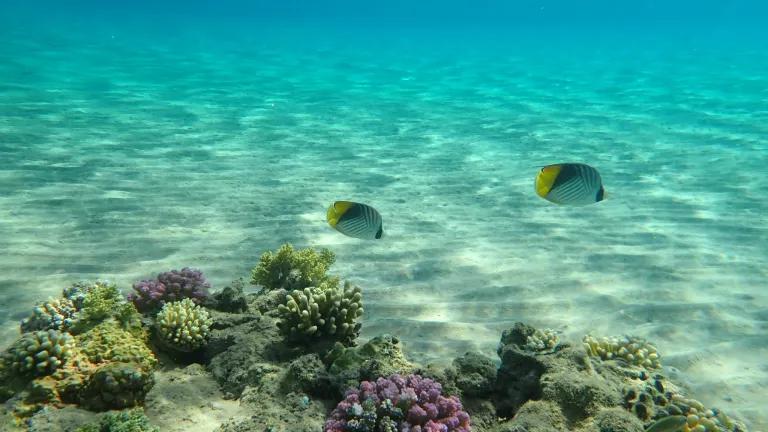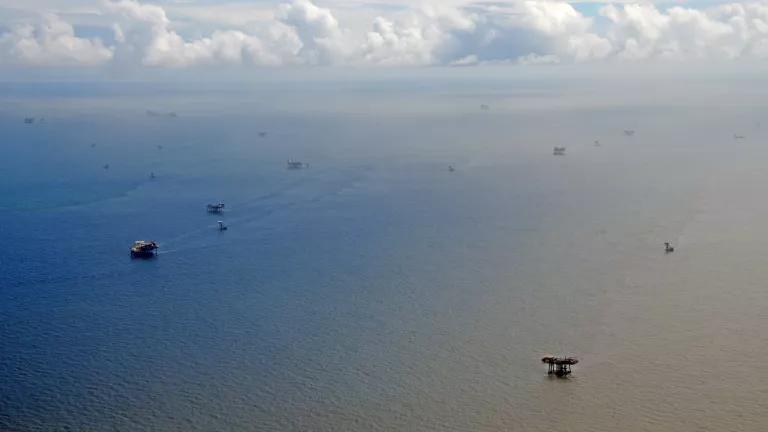Marine Biodiversity in Dangerous Decline, Finds New Report

Over one-third of marine mammals and nearly one-third of sharks, shark relatives, and reef-forming corals are threatened with extinction, according to a new report released today on the state of global biodiversity.
The Global Assessment Report on Biodiversity and Ecosystem Services, written by an intergovernmental body of biological and ecological experts representing 50 countries, lays out the dire situation for species richness across the globe. The most comprehensive assessment on the state of nature since 2005, the report finds that between half a million and one million species are threatened with extinction globally, and extinction rates have accelerated sharply in the past century.
Humans rely on biodiversity for survival, but, unsurprisingly, human activities are the primary cause of these huge declines, particularly in the ocean where fishing is driving the greatest biodiversity loss. While the statistics outlined are alarming, there is good news. If we act quickly to eliminate unsustainable fishing practices, protect a greater portion of the ocean (at least 30 percent, say many scientists), and adopt a new treaty to protect the high seas—the area of ocean outside national jurisdiction that covers nearly half the planet—we can stem the loss of marine biodiversity.
Fishing, land use change are the most significant threats to marine biodiversity
In the ocean, fishing has had the single greatest impact on biodiversity over the past 50 years. To sustain global fish catches, fishing fleets have had to venture out further and deeper, including into areas beyond national jurisdiction which are currently managed by a patchwork of regional and sectoral organizations that do not adequately conserve biodiversity. Overall one-third of fish stocks are overfished and another 60 percent are fished at their maximum sustainable levels.
Coastal land and sea use change has had the second largest impact on marine biodiversity. Development along coastlines as well as offshore aquaculture, bottom trawling, and oil and gas extraction have altered habitats, and toxic pollutants in agricultural and industrial runoff poison coastal fish harvests. Carbon dioxide emissions are making the ocean more acidic, making it harder for shellfish, corals, and types of plankton to survive. Because ocean and atmospheric circulation patterns are global, the impacts from ocean acidification are felt worldwide.
A third growing driver of marine biodiversity decline is climate change, which is expected to decrease ocean net primary production between 3 and 10 percent and fish biomass by 3 to 25 percent by the end of the century. As the oceans—which have absorbed 93 percent of excess heat from climate change since the 1970s—get warmer, fish populations are projected to migrate poleward. Despite increasing migration to cold waters, rapid sea ice loss and acidification are likely to prevent biodiversity increases in polar waters. In the tropics, more local species are likely to go extinct, and coral reefs are projected to undergo more extreme warming events with less recovery time in between, causing large bleaching episodes with high levels of mortality.
The ocean needs stronger protections to overcome mounting pressures
Pressures on marine biodiversity are accumulating rapidly but we can reduce these threats by deploying science-based policies that improve marine ecosystem health. We need to stop overfishing, rebuild overfished stocks through catch limits and ecosystem-based fisheries management, establish well-managed and highly or fully protected marine protected areas (MPAs), protect a greater portion of the ocean and land (at least 30 percent by 2030), and mitigate climate change.
MPAs, ocean parks where human activity is limited so that fish and other species can thrive, are one of the most effective ways to protect biodiversity. The Northeast Canyons and Seamounts Marine National Monument and California’s MPA network are two examples of biodiverse areas where fishing and other extractive activities are limited to maintain ecosystem health and increase climate resilience.
Despite the robust evidence that MPAs are effective tools for biodiversity conservation, less than 7 percent of the ocean is currently protected. This is a far cry from the the at least 30 percent that scientists say is needed to ensure a healthy ocean. When countries party to the Convention on Biological Diversity meet in China in 2020 they will have the opportunity to set a new target to set aside at least 30 percent of the ocean and lands in protected areas by 2030. Activities outside of the protected 30 percent must also be managed in a way that minimizes harmful impacts.
Establishing MPAs covering 30 percent of the ocean won’t be possible without finalization of a new treaty currently under negotiation at the United Nations addressing biodiversity in areas beyond national jurisdiction. Because the high seas are managed by a patchwork of outdated policies, there is no globally recognized mechanism to establish fully protected areas, a gap that the new agreement aims to fill. To enable strong protections covering at least 30 percent of the ocean, governments at the UN should finalize the new treaty in 2020 and immediately after begin establishing high seas MPAs.
We need action now
We rely on the ocean for the oxygen we breathe, the food we eat, and the moderate climate we live in. We need to implement strong protections in over 30 percent of it and sustainable fishing practices in all of it to prevent more drastic biodiversity loss. Billions of people are counting on it.




